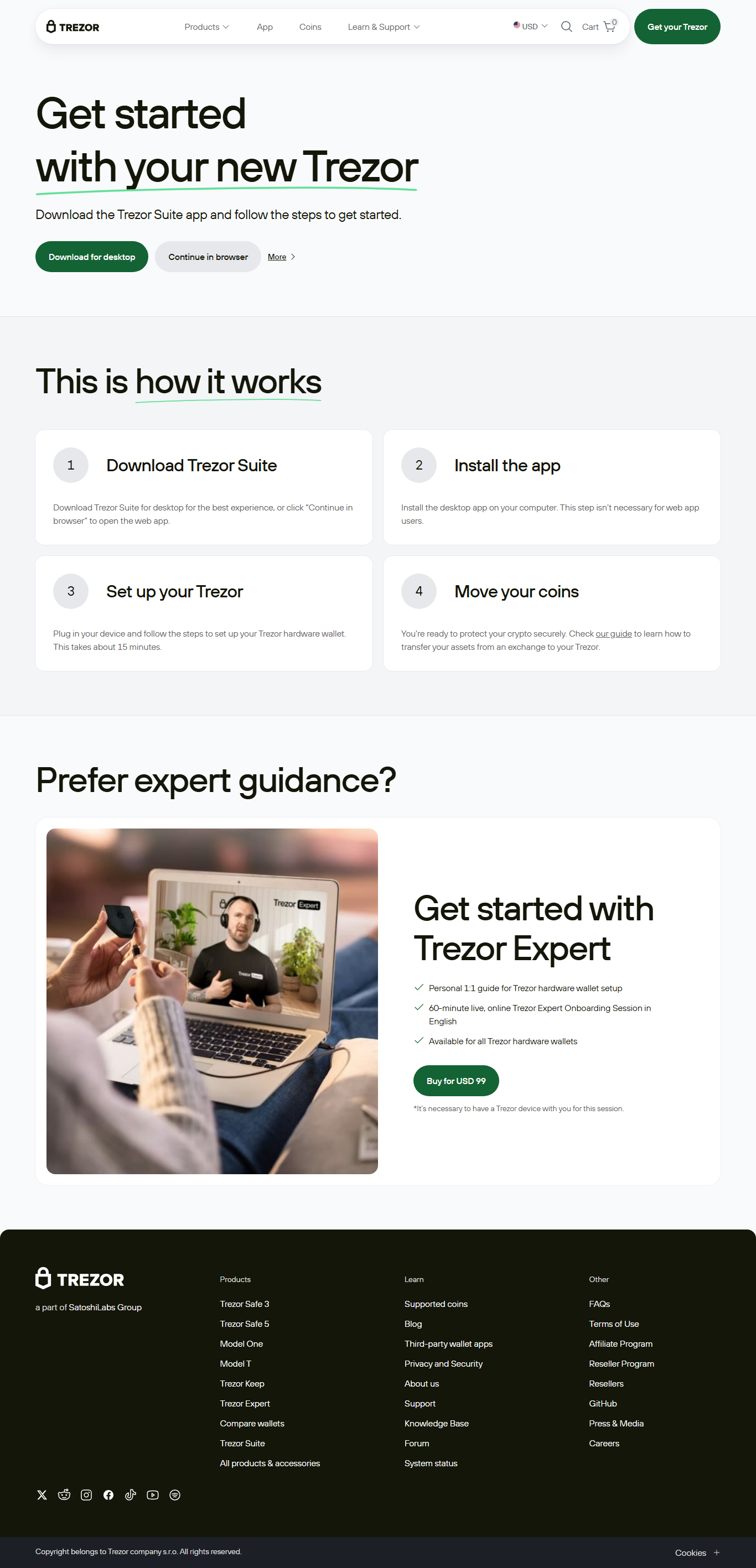
In the ever-evolving world of cryptocurrency, security is a top priority. Managing digital assets safely means using tools that prioritize user privacy, protection, and control. One of the most secure entry points to your crypto portfolio is the Trézor Login system—a gateway to decentralized financial freedom. This guide walks you through everything you need to know about how the Trézor Login works, why it matters, and how to use it effectively.
Trézor Login refers to the process of accessing your Trézor hardware wallet and connected applications, such as Trezor Suite or third-party platforms, using your physical device. Instead of relying on passwords and usernames that can be hacked or stolen, Trézor Login requires the user to physically confirm access with their hardware wallet.
When you use Trézor Login, you’re authenticating identity and transaction requests through a secure, offline device. This dramatically reduces the risk of phishing attacks, account takeovers, and malware interference.
The crypto landscape is full of threats—from malicious software to human error. With Trézor Login, your private keys never leave the hardware device. Here's why that matters:
No Centralized Servers: Your credentials aren't stored online.
Human Verification: Every login must be physically approved on your Trézor wallet.
Phishing Protection: Sites cannot impersonate Trézor Login due to hardware-level authentication.
No Password Fatigue: You don’t rely on weak or reused passwords.
Secure Recovery: With a recovery seed, your access is never permanently lost.
Every Trézor Login is a step toward truly owning your digital assets without depending on third-party custodians.
Using Trézor Login is simple, but behind the scenes, it's a powerful process:
You connect your Trézor hardware wallet to your computer or mobile device.
You visit a platform that supports Trézor Login, such as Trezor Suite.
The system requests login authentication.
Your device displays a confirmation request.
You verify and approve the login directly on your device screen.
The platform grants access after secure verification.
Unlike traditional login systems, Trézor Login doesn't expose your credentials at any step.
You can use Trézor Login with a growing number of applications, including:
Trezor Suite: The official interface for managing your crypto assets.
Decentralized Exchanges (DEXs): Some DEXs support Trézor Login for wallet connections.
Crypto Portfolio Trackers: Connect your Trézor securely to monitor holdings.
DApps and Web3 Interfaces: Log in with your hardware wallet to use decentralized services.
All of these use Trézor Login as a more secure alternative to web-based wallet access.
To get started with Trézor Login, you’ll need a Trézor device (Model One or Model T) and a secure environment. Follow these steps:
Go to the official setup site and download Trezor Suite.
Install Trézor Bridge if you're on a desktop, to enable communication.
Connect your Trézor device using a USB cable.
Complete the wallet setup or load your recovery phrase.
Open a service that supports Trézor Login.
Approve access directly on your device when prompted.
Once you've completed setup, you can use Trézor Login regularly without re-entering traditional credentials.
There’s a reason the industry is moving away from username/password systems—security. Trézor Login changes the game:
| Feature | Traditional Login | Trézor Login |
|---|---|---|
| Requires password | Yes | No |
| Susceptible to phishing | Yes | No |
| Works offline | No | Yes (via device) |
| Secure key storage | No | Yes (on hardware) |
| User controls access | Partial | Full control |
By using Trézor Login, you eliminate the weak points in legacy authentication methods.
Trézor Login is ideal for many scenarios:
Managing your crypto portfolio safely
Accessing decentralized finance (DeFi) tools
Storing NFTs and digital collectibles
Connecting to Web3 platforms securely
Preventing unauthorized access to wallets
Any platform that values secure access can benefit from integrating Trézor Login.
If you encounter issues while using Trézor Login, here are some tips:
Update Trezor Suite and firmware regularly.
Install Trézor Bridge to ensure browser recognition.
Check USB connections or try a different port/cable.
Clear browser cache if login requests don’t appear.
Disable conflicting extensions that may block hardware access.
Most Trézor Login issues are resolved by refreshing firmware or ensuring proper driver installation.
Even with a secure login system like Trézor Login, you must follow best practices:
Never share your recovery seed or PIN.
Only download software from official sources.
Always verify device screen information before approving.
Use a strong, unique passphrase if supported.
Store your device in a secure location.
Trézor Login is incredibly secure, but human error can still create vulnerabilities. Stay vigilant.